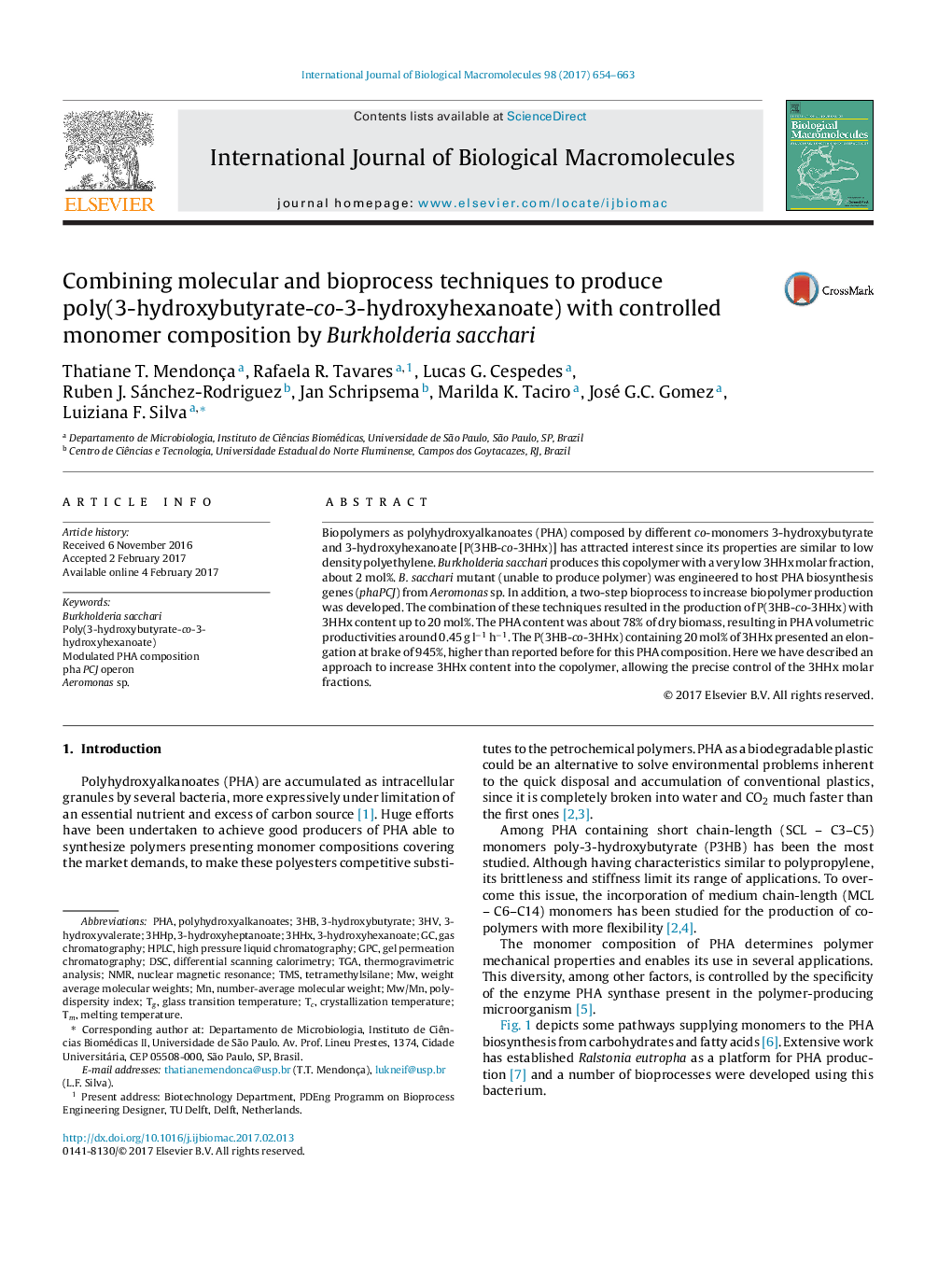| Article ID | Journal | Published Year | Pages | File Type |
|---|---|---|---|---|
| 5512318 | International Journal of Biological Macromolecules | 2017 | 10 Pages |
â¢Recombinant B. sacchari is able to produce copolymers with 20 mol% of 3HHx fraction.â¢A two-step bioprocess to control 3HHx fraction in the polyhydroxyalkanoate was proposed.â¢Aeromonas sp. PHA synthase has also specificity for 3HV and 3HHp monomers.â¢Modulated copolymers P(3HB-co-3HHx) are produced presenting different physical properties.
Biopolymers as polyhydroxyalkanoates (PHA) composed by different co-monomers 3-hydroxybutyrate and 3-hydroxyhexanoate [P(3HB-co-3HHx)] has attracted interest since its properties are similar to low density polyethylene. Burkholderia sacchari produces this copolymer with a very low 3HHx molar fraction, about 2 mol%. B. sacchari mutant (unable to produce polymer) was engineered to host PHA biosynthesis genes (phaPCJ) from Aeromonas sp. In addition, a two-step bioprocess to increase biopolymer production was developed. The combination of these techniques resulted in the production of P(3HB-co-3HHx) with 3HHx content up to 20 mol%. The PHA content was about 78% of dry biomass, resulting in PHA volumetric productivities around 0.45 g lâ1 hâ1. The P(3HB-co-3HHx) containing 20 mol% of 3HHx presented an elongation at brake of 945%, higher than reported before for this PHA composition. Here we have described an approach to increase 3HHx content into the copolymer, allowing the precise control of the 3HHx molar fractions.
Graphical abstractDownload high-res image (150KB)Download full-size image
